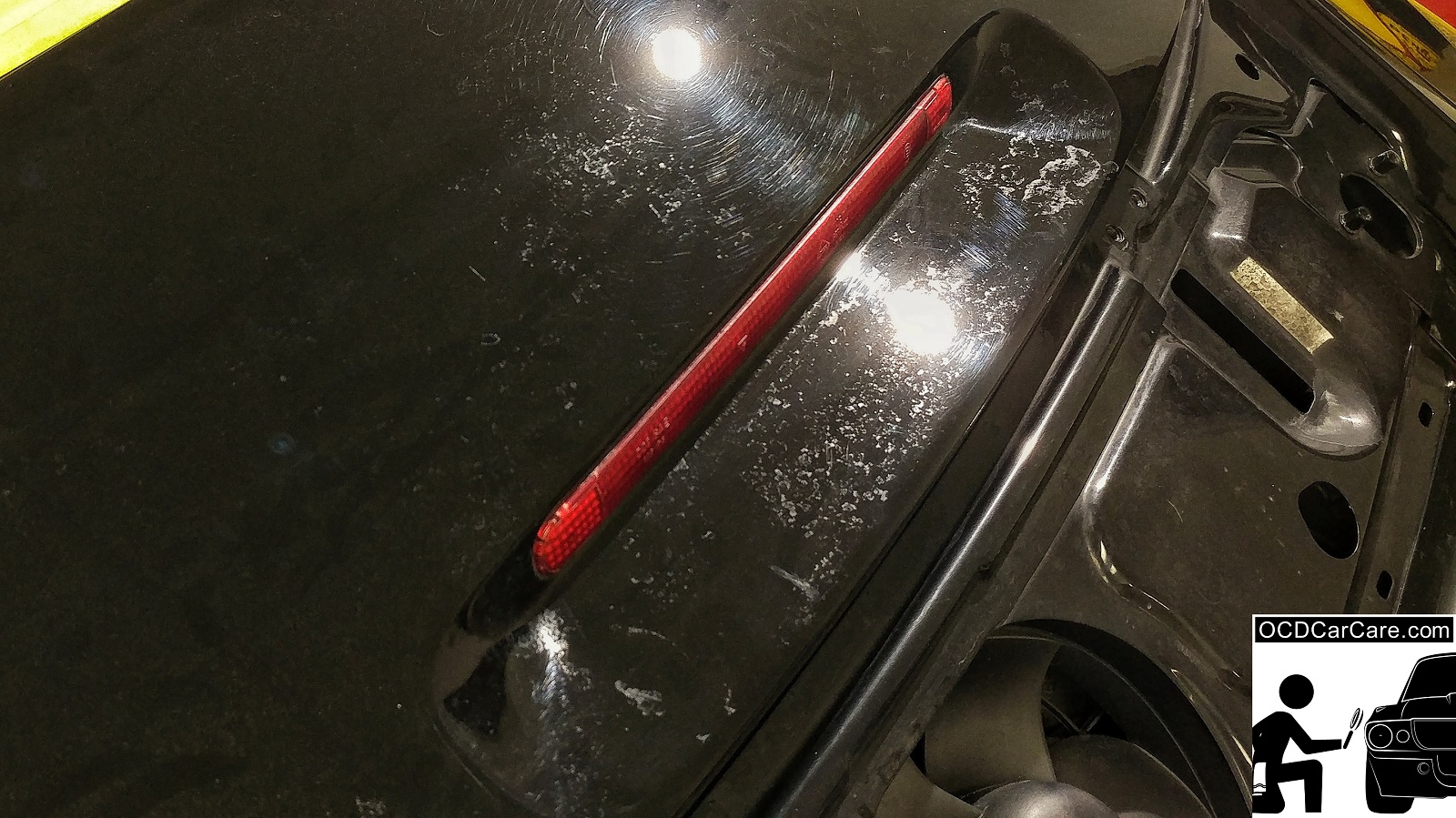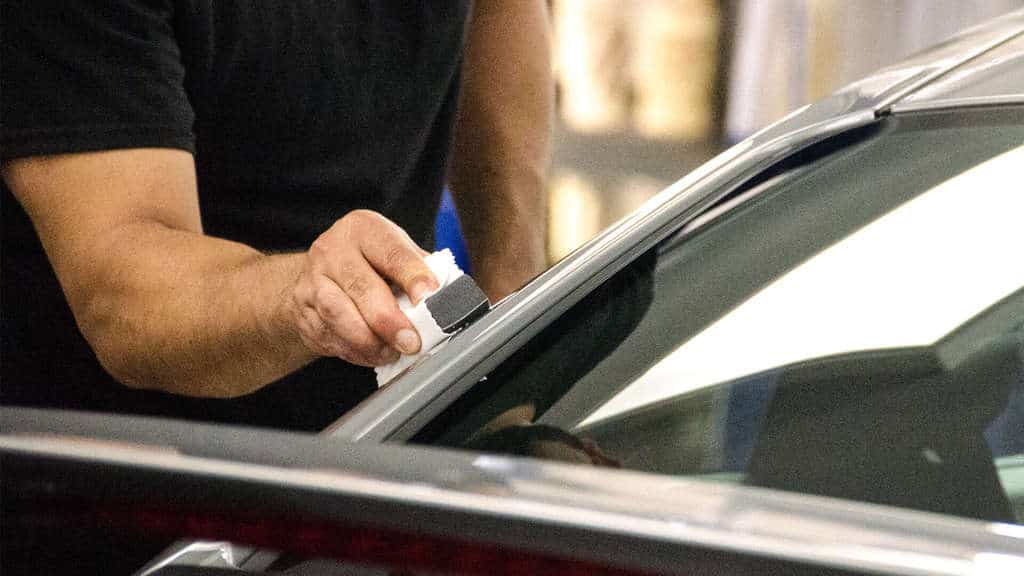Ceramic Coating: The Future of Automotive Surface Protection
Ceramic Coating: The Future of Automotive Surface Protection
Blog Article
Ceramic Finish vs. Typical Wax: Which Provides Much Better Long-Term Defense?
The discussion between ceramic finishings and standard wax for automobile defense has actually garnered significant focus among vehicle fanatics and experts alike. Ceramic finishings boast remarkable durability and resistance to environmental factors, yet the intricacy of their application increases questions about accessibility and usefulness.
Overview of Ceramic Covering
Ceramic covering has gained considerable appeal amongst vehicle enthusiasts and detailers alike because of its sophisticated safety top qualities. This innovative technology is made to create a sturdy, hydrophobic guard over a vehicle's paint surface area, dramatically enhancing its resistance to ecological pollutants such as dust, UV rays, and chemical discolorations. Unlike typical wax, which gives a short-term layer of security, ceramic coverings bond at a molecular degree with the paint, supplying lasting longevity-- commonly prolonging beyond two years with correct upkeep.
The application process involves thorough prep work of the vehicle's surface, consisting of cleaning and brightening to make certain optimal attachment. When applied, the finish cures to form a robust layer that not just includes depth and gloss to the paint but additionally streamlines maintenance. With its hydrophobic homes, ceramic coating enables water and dust to move off more easily, lowering the regularity of laundries and lessening the threat of swirl marks.
In addition, ceramic finishings are offered in various formulas, permitting users to select items customized to their certain needs and preferences. On the whole, ceramic layer represents a considerable improvement in paint security innovation, supplying premium performance compared to standard choices.
Summary of Typical Wax
Commonly considered a staple in vehicle care, wax acts as a preferred selection for those looking for an uncomplicated approach to improve and safeguard their car's paint - ceramic coating. Automotive wax typically consists of natural components, such as carnauba, or artificial compounds, designed to produce a protective layer on the surface area of the paint. This layer not just boosts the automobile's gloss and shine but additionally provides a barrier versus ecological pollutants
The application of wax is usually straightforward, making it obtainable for both specialists and DIY lovers. When used, wax needs a treating period, after which it sets to create a safety covering.
Nevertheless, while wax is effective for boosting the aesthetic charm of an automobile, it is very important to note that the protection it offers may demand a lot more constant reapplication compared to alternative items, such as ceramic finishings. On the whole, traditional wax continues to be a popular option for those prioritizing simplicity of use and immediate aesthetic improvement.
Resilience and Durability Comparison
While both ceramic finishings and standard wax offer safety benefits for automobile paint, their sturdiness and long life vary considerably. Typical wax, generally made from all-natural carnauba or synthetic polymers, usually supplies a safety layer that lasts roughly 3 to six months. This reasonably short life expectancy necessitates normal reapplication to preserve optimum defense.
On the other hand, ceramic coverings are engineered from sophisticated nanotechnology, forming a covalent bond with the paint surface. This causes a robust, hydrophobic layer that can sustain for 2 to five years, depending on the item and environmental problems. The remarkable longevity of ceramic finishes is connected to their chemical structure, which offers boosted resistance to scrapes, UV rays, and oxidation.

Security Against Environmental Aspects
Safeguarding a vehicle's paint from environmental elements useful reference is essential for keeping its look and value with time. Autos are regularly subjected to a selection of aspects, consisting of UV rays, bird droppings, tree sap, acid rain, and roadway crud, all of which can jeopardize the stability of the paintwork.
Ceramic coverings provide a durable protection versus these ecological aggressors. Unlike conventional wax, which can deteriorate swiftly under UV exposure, ceramic finishes develop a sturdy, hydrophobic layer that resists the harmful results of sunshine and toxic wastes. This innovative innovation creates a chemical bond with the vehicle's read review surface, supplying superior security that lasts for many years, also in harsh problems.
Traditional wax, while much easier to apply, typically calls for regular reapplication and supplies limited resistance to impurities and UV rays. In time, it can break down, leaving the paint at risk to scratches and oxidation. On the other hand, ceramic coatings keep their safety qualities much longer, significantly lowering the danger of paint damage and making sure that the automobile preserves its aesthetic allure. Therefore, ceramic finishes are significantly recognized as the remarkable choice for long-lasting protection against environmental variables.
Application and Upkeep Differences
The approaches of application and succeeding upkeep for ceramic coatings and traditional wax differ dramatically, impacting the general user experience and performance of each product. Ceramic finishes need a more intricate application procedure, generally including surface area prep work that includes washing, sanitizing, and polishing the vehicle. When the surface area is prepared, the ceramic finishing is applied in a controlled environment, commonly requiring professional experience to make sure correct healing and bonding to the paint.

While both items boost lorry look, the longer-lasting security provided by ceramic finishings might warrant their first financial investment, despite the even more requiring application process. Alternatively, typical wax stays a prominent choice for those seeking a simpler, albeit temporary, remedy.

Final Thought
To conclude, ceramic layers demonstrate considerable advantages over conventional wax in terms of toughness and environmental protection. With a life-span prolonging two to 5 years and premium resistance to UV rays, dust, and chemical stains, ceramic finishes use an extra effective solution for long-term automobile upkeep. Although the application process might require professional expertise, the resulting price savings and lowered frequency of reapplication underscore the value of ceramic coverings for those seeking optimum automobile security.
The argument in between ceramic finishes and conventional wax for vehicle defense has amassed considerable attention amongst automotive enthusiasts and specialists alike. Unlike typical wax, which offers a short-term layer of defense, ceramic finishes bond at a molecular level with the paint, using long-lasting longevity-- typically expanding beyond 2 years with proper maintenance.
While both ceramic coatings and standard wax deal protective advantages for auto paint, their sturdiness and long More Info life differ significantly. For cars and truck enthusiasts seeking long-lasting defense, ceramic coverings offer an engaging advantage over standard wax items.
In conclusion, ceramic finishings show substantial advantages over conventional wax in terms of toughness and ecological protection.
Report this page